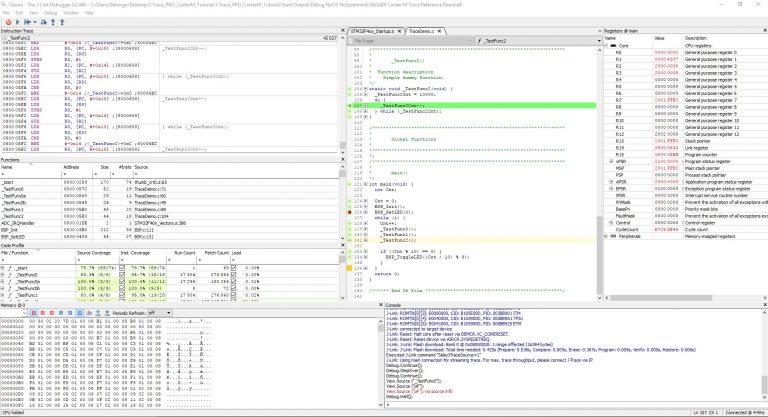

- #Importing segger embedded studio project to source insight how to#
- #Importing segger embedded studio project to source insight software#
- #Importing segger embedded studio project to source insight code#
The latest Texas Instruments MSP432P4xx and MSP432E4 Device Family Packs are fully compliant with Atollic TS. Additional features include automatic hard fault crash analysis that works out why the system crashed, where, and under what circumstances.Ī free version of Atollic TrueSTUDIO (with no code-size limitations) can be downloaded from Atollic TS 7.1 and higher supports CMSIS packs (see the CMSIS Pack Documentation for a description of CMSIS packs).Ī CMSIS device family pack adds device support to the IDE and features some basic examples. In particular, Atollic TrueSTUDIO provides SimpleLink MSP432 microcontroller developers with a wide selection of system analysis functions, that helps assess the soundness of the design from a variety of angles including static analysis on memory and stack usage, as well as visualizing the dynamic behavior of the running system.
#Importing segger embedded studio project to source insight software#
With Atollic TrueSTUDIO, SimpleLink MSP432 developers get a professional development tool that is built on open standards, while at the same time including advanced debug and software engineering features that help developers supercharge their development efficiency.
#Importing segger embedded studio project to source insight code#
Atollic TrueSTUDIO is based on open standards (ECLIPSE and GNU) and extended with professional features for code management and advanced system analysis that gives a unique insight into the structure and dynamic behavior of the system. Tensorflow/lite/micro/examples/hello_world/main.Atollic ® TrueSTUDIO ® is a flexible and extensible ARM ® development and debugging IDE, perfect for SimpleLink TM MSP432 TM MCU developers who want supremely powerful tools to aid in development of high-quality embedded software. This one is generic, it does not have mbed-specific code: Still not clear for me the: there is the board-specific int main() ? lib files: BSP_DISCO_F746NG.lib LCD_DISCO_F746NG.lib mbed-os.libįor my board I can probably manually put the. This tag probably leads to appearing in mbed project folder the 2. The original example for DISCO-stm32f746 board uses in the step 1) TAGS="CMSIS disco_f746ng" I think I need to run the following steps:ġ) make -f tensorflow/lite/micro/tools/make/Makefile TARGET=mbed TAGS="cmsis-nn"Ģ) cd tensorflow/lite/micro/tools/make/gen/mbed_cortex-m4/prj/hello_world/mbedĥ) mbed compile -m NUCLEO_H743ZI2 -t GCC_ARMīut I cannot figure out from the original example where to put the board-specific main.cpp and the board-specific *.lib files.
#Importing segger embedded studio project to source insight how to#
I cannot figure out how to modify the original code to compile for my. The following example project was created with the SEGGER Embedded Studio. I do not have this exact board, I have this board: ST-Nucleo-H743ZI2 Free open source IoT OS and development tools from Arm. There is an official "hello world" TF micro example (sine prediction): These types of functions are use the get the needed memory: It's doable since the size is deterministic when the model is known, but in practice it may need some hacking. To run this on x86 can be tricky, perhaps we need a call on that. The best method (I can think of right away) is to check the 'high water mark' in the arena after greedy planner has done its thing. It's not straight fwd to derive how much/if the arena size increases. Scratch tensors is a general concept and not specific for CMSIS-NN.

It may increase the required arena size due to the fact it uses scratch tensors.


 0 kommentar(er)
0 kommentar(er)
